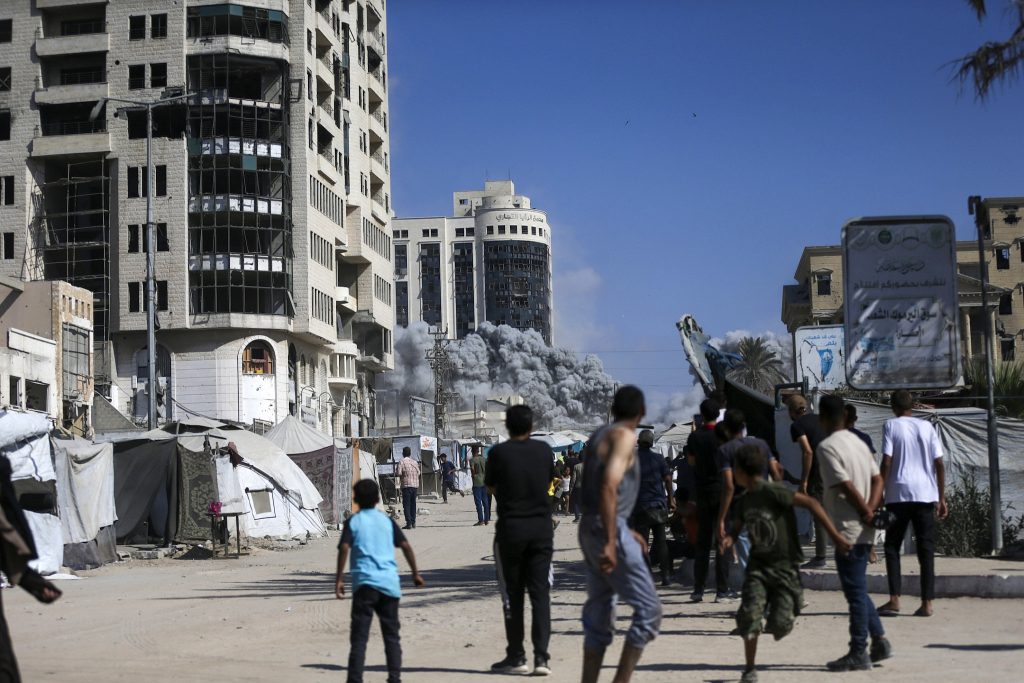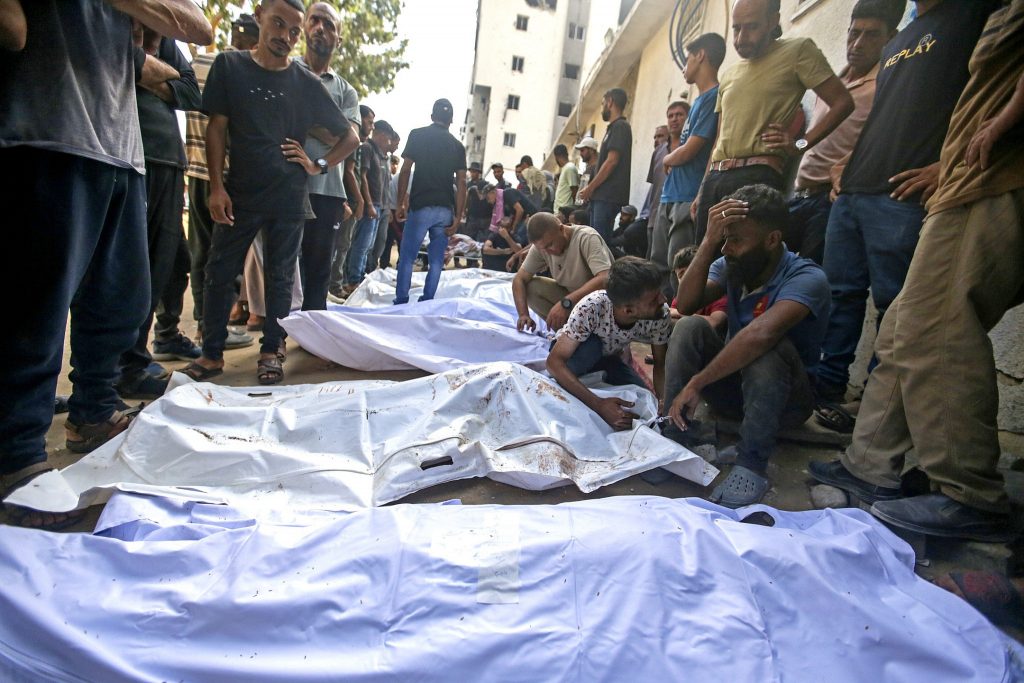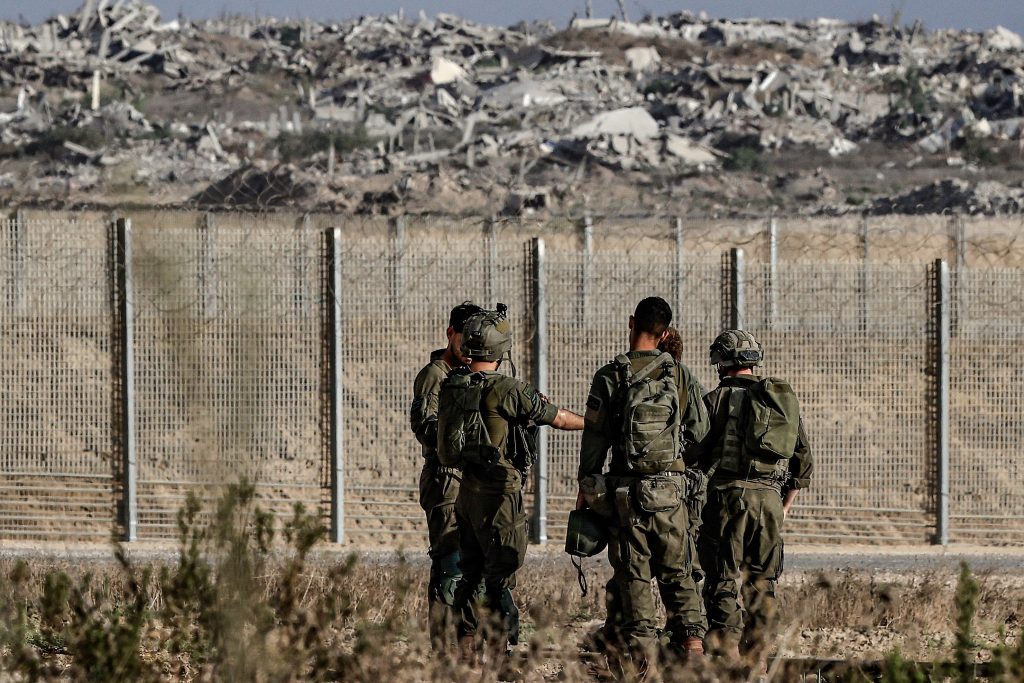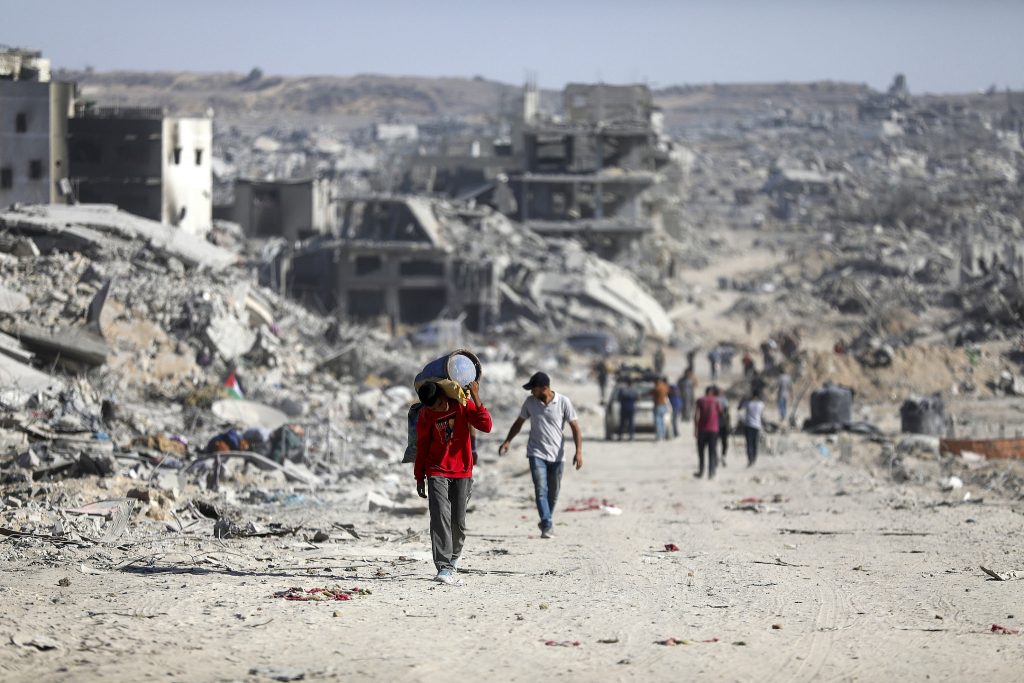By attaching a military goal to each act of killing, Israelis of all stripes could partake in the slaughter without questioning the morality of their actions.
A few months after October 7, I enrolled in an introductory course on genocide at the Open University of Israel. The lecturer began the first class by telling us — about 20 Jewish-Israeli students gathered on Zoom — that by the end of the semester we would understand exactly what genocide entails and be able to explain why Israel is not committing genocide in Gaza.
In a nutshell, his argument was this: At most, Israel might be destroying Gaza, but its actions are driven by military objectives rather than an “intent to destroy” a specific group “as such,” as the Genocide Convention outlines. Without this intent, he concluded, the term genocide does not apply.
Over the past two years, I have published numerous investigations exposing details of Israel’s open-fire policy in Gaza, several of which have helped substantiate legal claims of genocide. When South Africa filed its case against Israel at the International Court of Justice (ICJ) in January 2024, it relied in part on our November 2023 exposé that revealed Israel’s AI-driven mass assassination campaign targeting the family homes of alleged militants. When a UN committee similarly reached the conclusion last month that Israel has committed genocide, it relied in part on another of our investigations showing that more than 80 percent of Gaza’s dead were civilians according to an internal Israeli intelligence database.
Yet few of the dozens of soldiers and officers I spoke to over the course of these investigations, many of whom served willingly as whistleblowers, saw themselves as participants in genocide. When intelligence officers and commanders described bombing family homes in Gaza, they often echoed the university lecturer’s logic: Sure, we may have committed crimes, but we were not murderers because every act had a specific military objective.
For example, after October 7, the army authorized soldiers to kill up to 20 civilians in order to assassinate a suspected low-level Hamas operative, or hundreds of civilians when targeting more senior figures. The vast majority of these assassinations occurred in civilian homes where no military activity was taking place. But for most of the soldiers I spoke to, the mere existence of an alleged military target, even in cases where the intelligence picture was murky, justified virtually any resultant death toll.

In another investigation, a soldier described to me how his battalion used remote-controlled drones to fire on Palestinian civilians, including women and children, as they tried to return to their destroyed homes in an area occupied by the Israeli army, killing 100 unarmed Palestinians over the course of three months. The goal, he explained, was not to kill them for the sake of it, but to keep the neighborhood empty and thus safer for the soldiers stationed there.
Another soldier recounted participating in the shelling of an entire residential block, comprising more than 10 multi-story apartment buildings and one high-rise all packed with families. She knew beforehand that in doing so she and her crew would likely kill some 300 civilians. But the operation, she explained, was based on intelligence suggesting that a relatively senior Hamas commander might be hiding somewhere beneath one of these buildings. Without more precise information, they destroyed the entire area in the hope of killing him.
The soldier conceded that the attack amounted to a massacre. But in her view, this was not the intention; the goal was to hit the commander, who may not have even been there.
This mission-oriented framing played a crucial role in enabling ordinary Israelis to participate in genocide — perhaps more than obedience alone, which is usually assumed to be the primary motivator in such contexts. By understanding each act of violence as a discrete task, from targeting a Hamas operative to securing a perimeter, soldiers could avoid confronting their role in the mass slaughter of civilians.
This mindset also becomes easier to sustain in an era of artificial intelligence and big data. These technologies can gather and analyze information about an entire population almost instantaneously, mapping buildings and their occupants with purported precision. As such, they produce an endless stream of apparent military justifications, creating a veneer of legality for a policy of mass murder. AI has, in effect, enabled Israel to turn a cornerstone of international law — the obligation to attack only military targets — into a tool that legitimizes and accelerates the very slaughter it was intended to prevent.

Overlapping motives
As a fragile U.S.-brokered ceasefire takes effect in Gaza, global efforts to ensure accountability and justice will continue in full force. South Africa’s case at the ICJ will rumble on, while Israel and its supporters — including Western governments — will seek to discredit accusations of genocide in order to ward off the legal consequences of such a ruling. In doing so, they will continue to point to the stated military objectives behind every specific attack, as the army does routinely in response to our reporting.
The tendency of perpetrators of genocide to invoke “security” as a justification for mass violence is well documented, rationalizing acts of brutality within a broader framework of self-defense. But whatever flimsy excuse is given in each case, Israel’s attacks were undeniably carried out in the full knowledge that they would lead to the destruction of another people. The result is a Palestinian death toll that is thought to exceed 100,000, and the near-total obliteration of the Gaza Strip.
Still, to focus only on how each individual act of violence accumulated to create an overall reality of genocide is also to miss the point. For many of Israel’s leaders, mass death and destruction was the intention. From deliberately starving 2 million people and gunning down aid seekers, to systematically leveling entire cities and actively working toward mass expulsion, the annihilation of the Palestinians of Gaza as a goal in itself was abundantly clear.
Particularly after Israel shattered the previous ceasefire in March, whatever military objectives could be said to have existed became even more tenuous. What remained was a bare murderous logic that the army rarely bothered to justify in military terms.
This motivation was clear not only in deed but also in word. As Prime Minister Benjamin Netanyahu put it in May: “We keep demolishing houses; they have nowhere to return. The only logical outcome will be Gazans’ desire to emigrate outside the Strip.” Ex-military intelligence chief Aharon Haliva went into even blunter detail: “For everything that happened on October 7, for every one of us who died on October 7, 50 Palestinians must die. It doesn’t matter now — children or not. I’m not speaking out of revenge but as a message for future generations. They need a Nakba now and then to feel the price.”

But crucially, mission-oriented motives and genocidal motives were not mutually exclusive; instead, they reinforced one another. And this overlap widened the base of those willing to participate in the slaughter.
The openly genocidal soldiers — of whom there were many — razed the city of Rafah to the ground in order to ethnically cleanse the Palestinians, while those with a more liberal self-image destroyed it to create a “security buffer zone.” Haliva saw the bombing of family homes as an act of revenge, while soldiers who were more troubled by such justifications could tell themselves it was done in order to hit a target present inside.
The mission-driven mentality fragments the destruction of a people and place into thousands of isolated acts, each justified on its own terms, none acknowledged as part of a larger campaign of genocide. It allows some of those carrying it out to ignore the overarching intent, even as leaders like Netanyahu and Haliva articulate it openly. To invert the old saying: In focusing on each tree, they miss the forest of genocide.
Genocide as moral framework
What lies at the heart of all of these justifications is the dehumanization of Palestinians. The soldiers who slaughtered 300 people to kill a single Hamas operative told me they probably would not have done so if one Jewish child had been in the building.
Dehumanization runs in two directions: Not only does it inflate the victim into a monstrous threat, it also does the opposite — reducing them to dust, shrinking them until they disappear. That is how a soldier carrying out a defined mission can justify the killing of 300 people. They are not viewed as 300 unique humans, but merely data points in a software that calculates “collateral damage.”
Many Jewish-Israelis have understood the developments of the last two years through the language of the Holocaust. One childhood friend who became a career army officer, and who no longer speaks to me, wrote on Facebook that before October 7 he made sure to attend public Holocaust survivor testimonies “to get as scarred as possible” and thus find purpose in his work. After Hamas’ massacre, which he sees as the work of present-day Nazis, he wrote that he can now deeply understand Holocaust survivors’ pain.

Others in Israel and around the world — myself included — looked at Israel’s slaughter of civilians, Gaza’s starving children, the mass graves, and the endless forced displacement and thought of those same events from the opposite perspective.
It is striking that the imagery of the Holocaust can serve both to justify Gaza’s destruction and to resist it. This paradox speaks to the power of genocide as the dominant moral language of our time, and to the reality that Palestinians must often translate their suffering into that language to even be heard as victims.
Yet to see the past two years not only through the prism of genocide but also as a second Nakba — a sustained project of erasure aimed at destroying both a people and the space they inhabit — may bring us closer to grasping the nature of Israel’s actions. Whereas genocide is often understood as violence for its own sake, the Nakba represents violence with a purpose: the removal and replacement of a people.
And yet, as a Jewish-Israeli faced with the horrors of the past two years, I cannot help but think in Holocaust terms. The destruction of Gaza has enabled me to better understand not only the stories of the victims but also of the perpetrators — the silent majority who facilitated atrocities through their actions and the stories they tell themselves to justify it all.
A version of this article was first published in Hebrew on Local Call. Read it here.
Yuval Abraham is a journalist and filmmaker based in Jerusalem.
